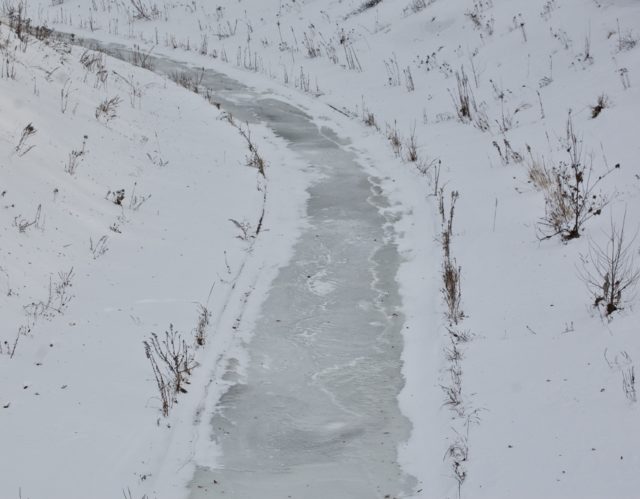
The average temperature in Fairbanks, Alaska in January ranges from -17° to 1°. Fahrenheit.
Years ago while visiting that city in the summer, I observed most people wearing shorts and t-shirts when the daily high was around 70°. People there were rumored to be dying of heatstroke from a week of weather that most in Connecticut would find generally warm and pleasant, especially when at that time we had brownouts here because of the heatwave.
Our recent cold snaps were brutal, to us, because we rarely experience lows that low for that long. There’s the matter of getting used to it, of adjusting one’s mindset.
Naturalist John Muir, in his words, sauntered up mountains. Not hiked. Sauntered.
He meant that in a holy way, but the word sounds casual. It’s walking without being frantic. There’s time to notice the world in which we live.
Riverfront Recapture is hosting a screening of the film Mile…Mile & A Half on January 17th. It documents five friends walking from Yosemite Valley to Mount Whitney in California. That’s 211 miles — roughly the distance from New York to Boston. That walk is spread out over 25 days and is not a stroll across flatlands.
Without a point of comparison, we can trick ourselves into believing that our interpretations of experiences are objective truths.
The screenshot below shows how the mall compares to downtown Hartford. If you look closely, you’ll notice that this outlines the entire general mall and strip mall area, rather than the mall itself. Does it make a difference? Even if you park close to an entrance, you are walking through, meandering through stores, probably backtracking when you realize you walked by the place you needed to visit, and then, there’s a second level.
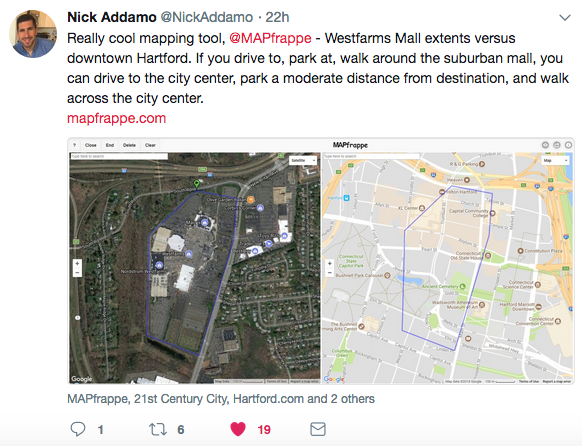
Inspired by Nick Addamo’s find, I used the MAPfrappe tool to create a few more points of comparison.
Let’s start easy. Go grocery shopping? You obviously get more steps in if you walk up and down every aisle instead of sticking to the produce, dairy, and bread route.
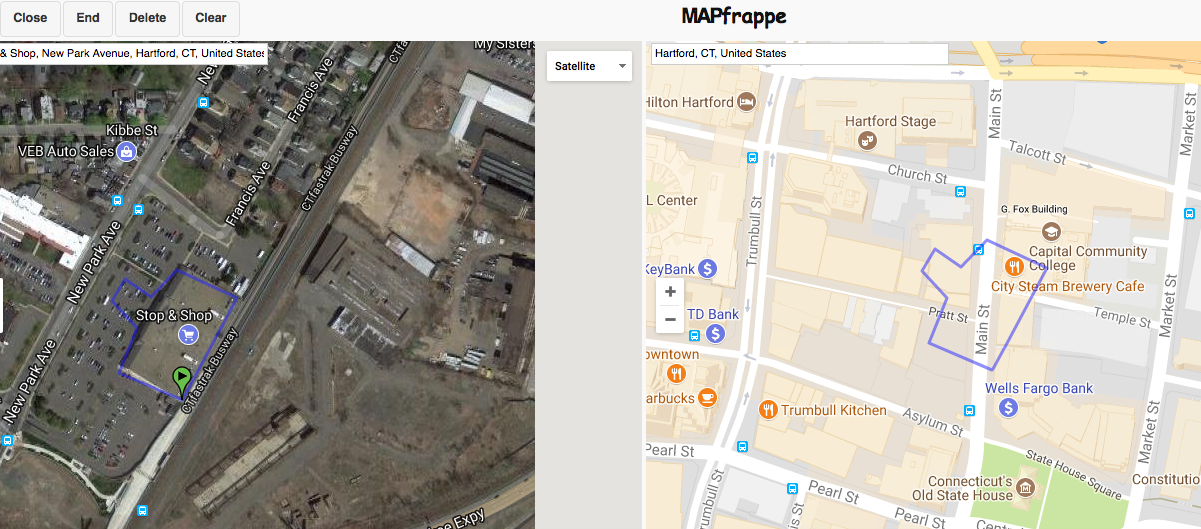
Walking from one end to the other of the Buckland Hills mall is like going from the Connecticut Science Center to the Civic Center. If you walk the entire shopping center — both floors — once, you’re going a much longer distance. The main difference is that when inside the mall, you’re not going to encounter an art museum or historic architecture.

Here is how West Hartford Center and Blue Back Square compare to downtown Hartford.
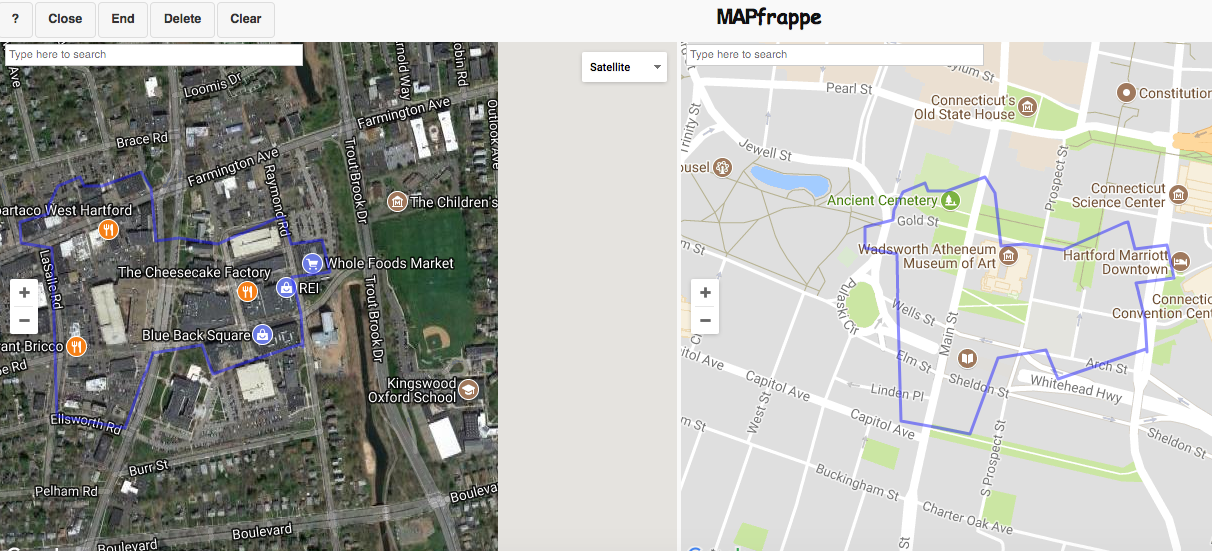
Ever take one of the popular paths at West Hartford Reservoir? That’s like walking from Hartford Hospital to beyond the stadium and back. There are far more benches to stop and sit on while walking downtown.
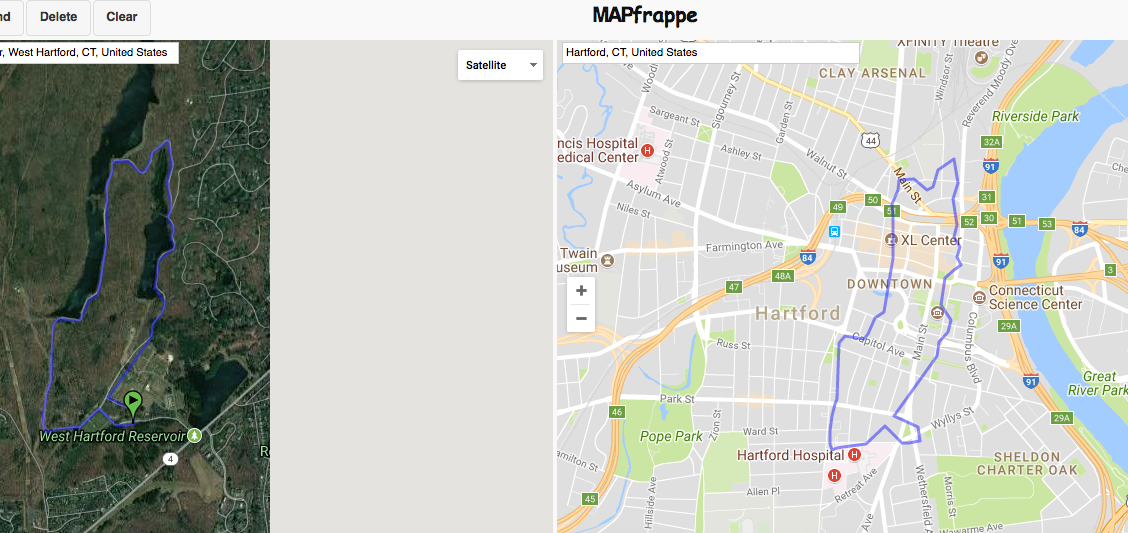
Spent a day in NYC walking around Central Park? That’s the equivalent of walking from Trinity College to The Meadows and back. It’s around six miles. If you’re someone trying to do 10,000 steps per day, one loop would put you over that.
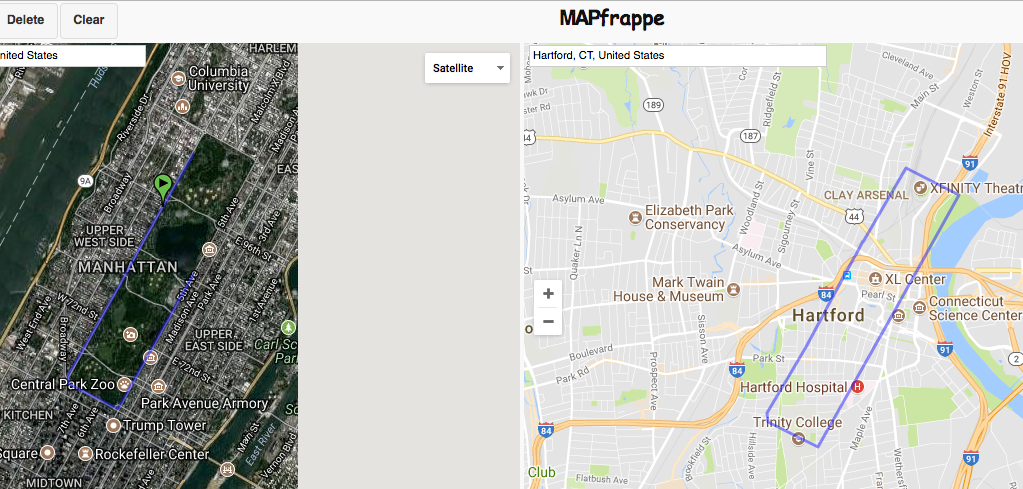
We can adjust when we allow ourselves to do so.
Meet Your City: Sauntering Here and There
The average temperature in Fairbanks, Alaska in January ranges from -17° to 1°. Fahrenheit.
Years ago while visiting that city in the summer, I observed most people wearing shorts and t-shirts when the daily high was around 70°. People there were rumored to be dying of heatstroke from a week of weather that most in Connecticut would find generally warm and pleasant, especially when at that time we had brownouts here because of the heatwave.
Our recent cold snaps were brutal, to us, because we rarely experience lows that low for that long. There’s the matter of getting used to it, of adjusting one’s mindset.
Naturalist John Muir, in his words, sauntered up mountains. Not hiked. Sauntered.
He meant that in a holy way, but the word sounds casual. It’s walking without being frantic. There’s time to notice the world in which we live.
Riverfront Recapture is hosting a screening of the film Mile…Mile & A Half on January 17th. It documents five friends walking from Yosemite Valley to Mount Whitney in California. That’s 211 miles — roughly the distance from New York to Boston. That walk is spread out over 25 days and is not a stroll across flatlands.
Without a point of comparison, we can trick ourselves into believing that our interpretations of experiences are objective truths.
The screenshot below shows how the mall compares to downtown Hartford. If you look closely, you’ll notice that this outlines the entire general mall and strip mall area, rather than the mall itself. Does it make a difference? Even if you park close to an entrance, you are walking through, meandering through stores, probably backtracking when you realize you walked by the place you needed to visit, and then, there’s a second level.
Inspired by Nick Addamo’s find, I used the MAPfrappe tool to create a few more points of comparison.
Let’s start easy. Go grocery shopping? You obviously get more steps in if you walk up and down every aisle instead of sticking to the produce, dairy, and bread route.
Walking from one end to the other of the Buckland Hills mall is like going from the Connecticut Science Center to the Civic Center. If you walk the entire shopping center — both floors — once, you’re going a much longer distance. The main difference is that when inside the mall, you’re not going to encounter an art museum or historic architecture.
Here is how West Hartford Center and Blue Back Square compare to downtown Hartford.
Ever take one of the popular paths at West Hartford Reservoir? That’s like walking from Hartford Hospital to beyond the stadium and back. There are far more benches to stop and sit on while walking downtown.
Spent a day in NYC walking around Central Park? That’s the equivalent of walking from Trinity College to The Meadows and back. It’s around six miles. If you’re someone trying to do 10,000 steps per day, one loop would put you over that.
We can adjust when we allow ourselves to do so.
Related Posts
Casa Linda: Downtown
In Your Neighborhood: Sheldon/Charter Oak (round two)
In Your Neighborhood: Asylum Hill (round two)